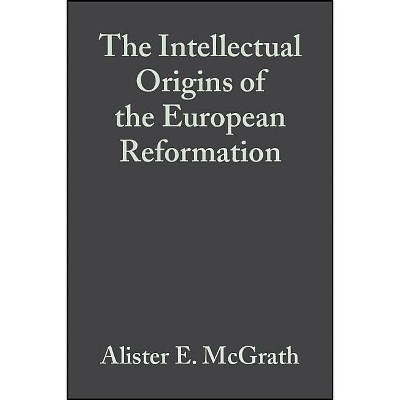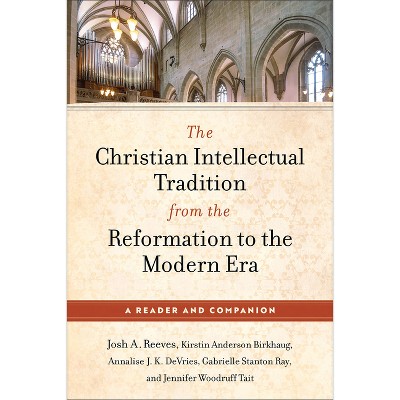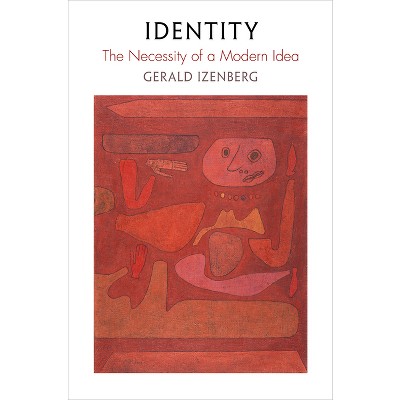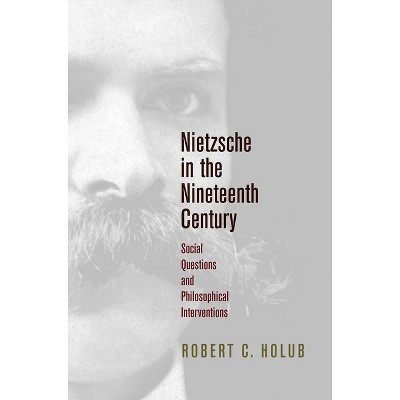The Spatial Reformation - (Intellectual History of the Modern Age) by Michael J Sauter (Hardcover)

About this item
Highlights
- In The Spatial Reformation, Michael J. Sauter offers a sweeping history of the way Europeans conceived of three-dimensional space, including the relationship between Earth and the heavens, between 1350 and 1850.
- About the Author: Michael J. Sauter is Profesor-Investigador in the Division de Historia at the Centro de Investigacion y Docencia Economicas, A.C. in Mexico City.
- 344 Pages
- Science, History
- Series Name: Intellectual History of the Modern Age
Description
About the Book
The Spatial Reformation offers a sweeping history of the way Europeans conceived of three-dimensional space, between 1350 and 1850, and calls for a deliberate reconsideration not only of what constitutes the intellectual foundation of the early modern era but also of its temporal range.Book Synopsis
In The Spatial Reformation, Michael J. Sauter offers a sweeping history of the way Europeans conceived of three-dimensional space, including the relationship between Earth and the heavens, between 1350 and 1850. He argues that this "spatial reformation" provoked a reorganization of knowledge in the West that was arguably as important as the religious Reformation. Notably, it had its own sacred text, which proved as central and was as ubiquitously embraced: Euclid's Elements. Aside from the Bible, no other work was so frequently reproduced in the early modern era. According to Sauter, its penetration and suffusion throughout European thought and experience call for a deliberate reconsideration not only of what constitutes the intellectual foundation of the early modern era but also of its temporal range.
The Spatial Reformation contends that space is a human construct: that is, it is a concept that arises from the human imagination and gets expressed physically in texts and material objects. Sauter begins his examination by demonstrating how Euclidean geometry, when it was applied fully to the cosmos, estranged God from man, enabling the breakthrough to heliocentrism and, by extension, the discovery of the New World. Subsequent chapters provide detailed analyses of the construction of celestial and terrestrial globes, Albrecht Dürer's engraving Melencolia, the secularization of the natural history of the earth and man, and Hobbes's rejection of Euclid's sense of space and its effect on his political theory. Sauter's exploration culminates in the formation of a new anthropology in the eighteenth century that situated humanity in reference to spaces and places that human eyes had not actually seen. The Spatial Reformation illustrates how these disparate advancements can be viewed as resulting expressly from early modernity's embrace of Euclidean geometry.
Review Quotes
"The Spatial Reformation is ambitious and original, and its key contention that Euclidean space reshaped the European intellectual and cultural landscape is entirely convincing. The book is also filled with a plethora of surprising insights on topics ranging from early modern terrestrial globes to Enlightenment extraterrestrial. It is not, to be sure, an easy read. But it is well worth the effort."-- "Journal of Modern History"
"An enormously ambitious and original book that is sure to provoke enthusiasm and outrage, favor and critique. The scale of synthesis The Spatial Reformation presents, the depth of research and documentation, is worthy of the highest respect. Michael J. Sauter has written one of the most significant revisions in the history of Western thought that I have encountered in a very long career."-- "John Zammito, Rice University"
About the Author
Michael J. Sauter is Profesor-Investigador in the Division de Historia at the Centro de Investigacion y Docencia Economicas, A.C. in Mexico City.










